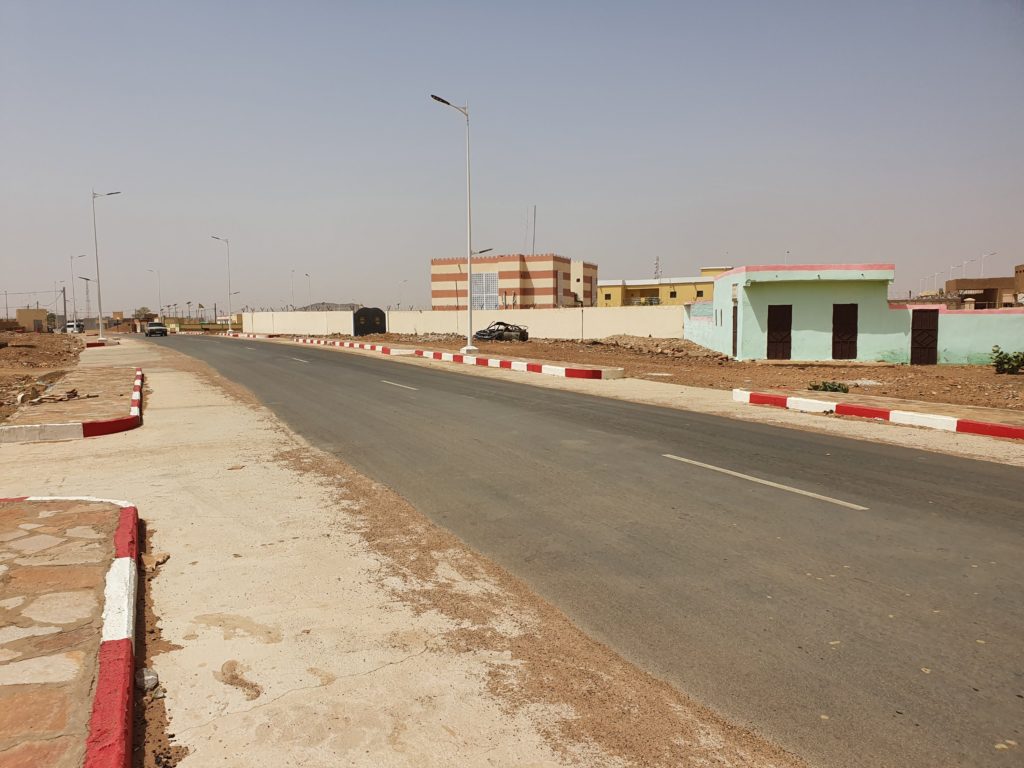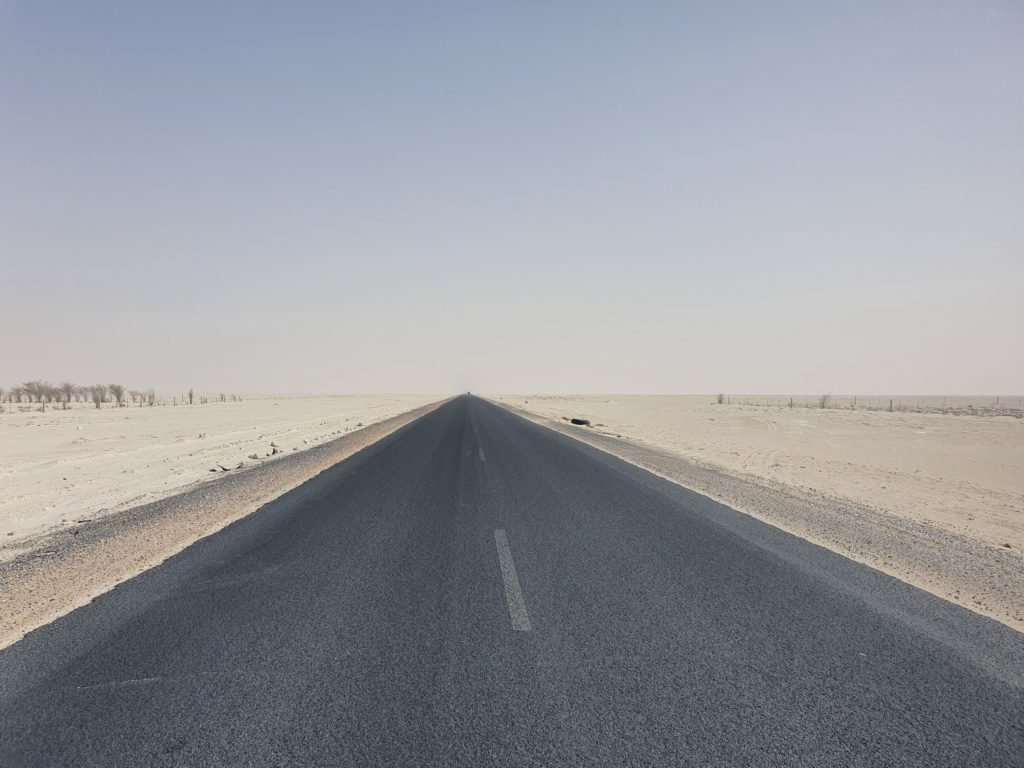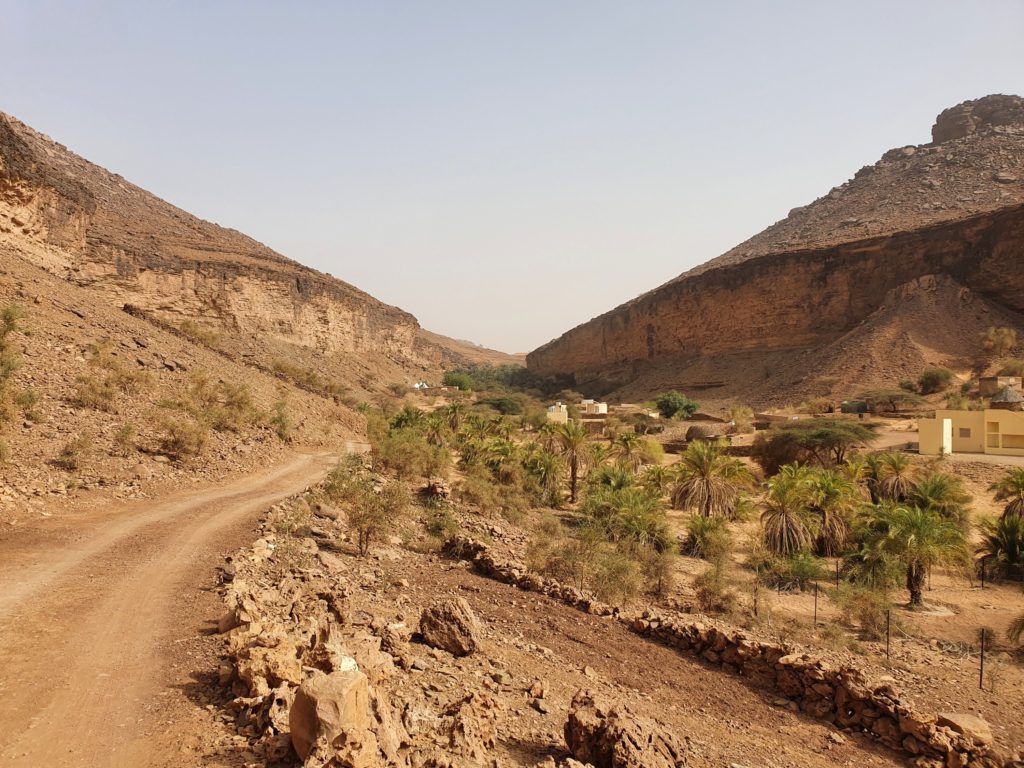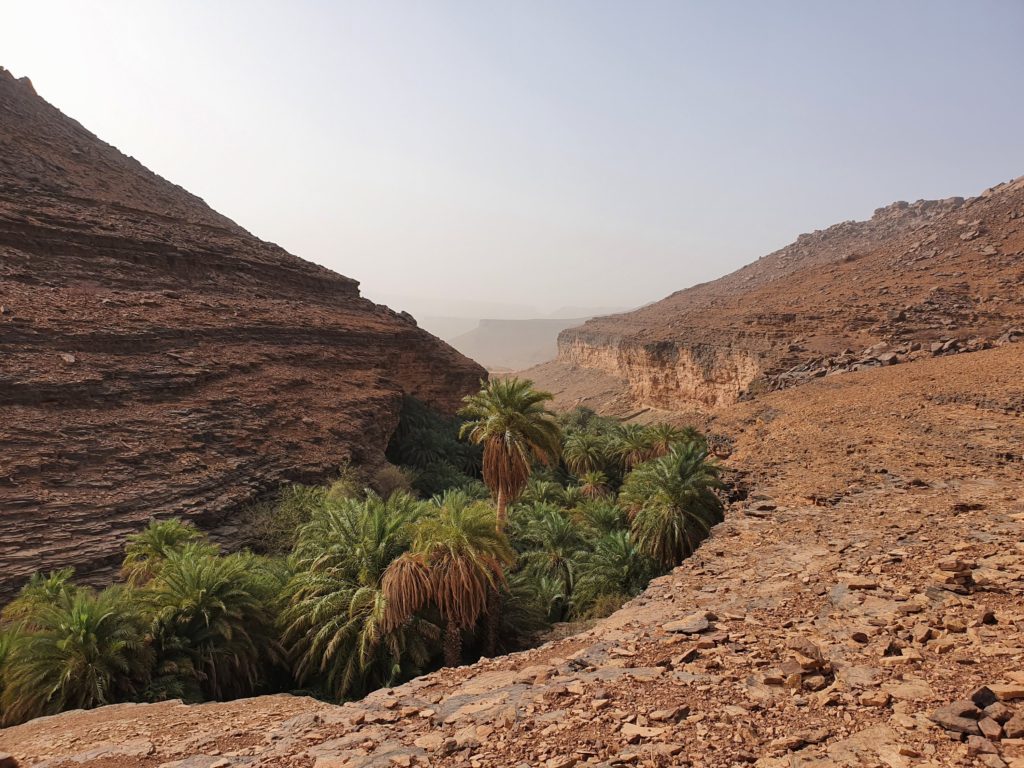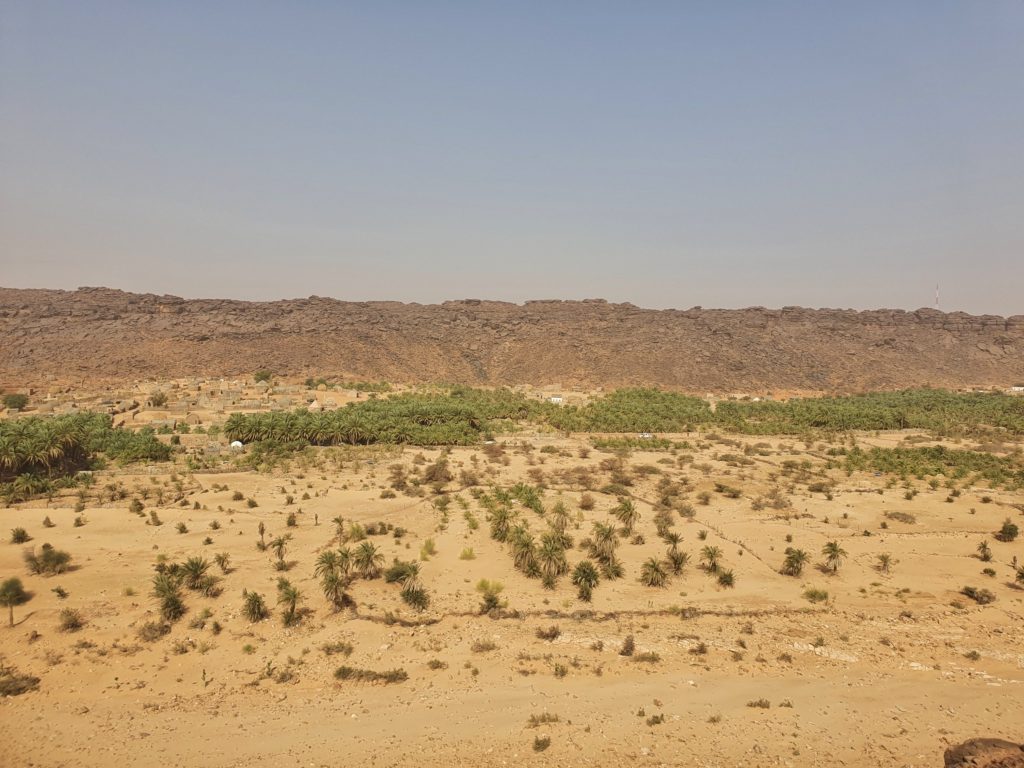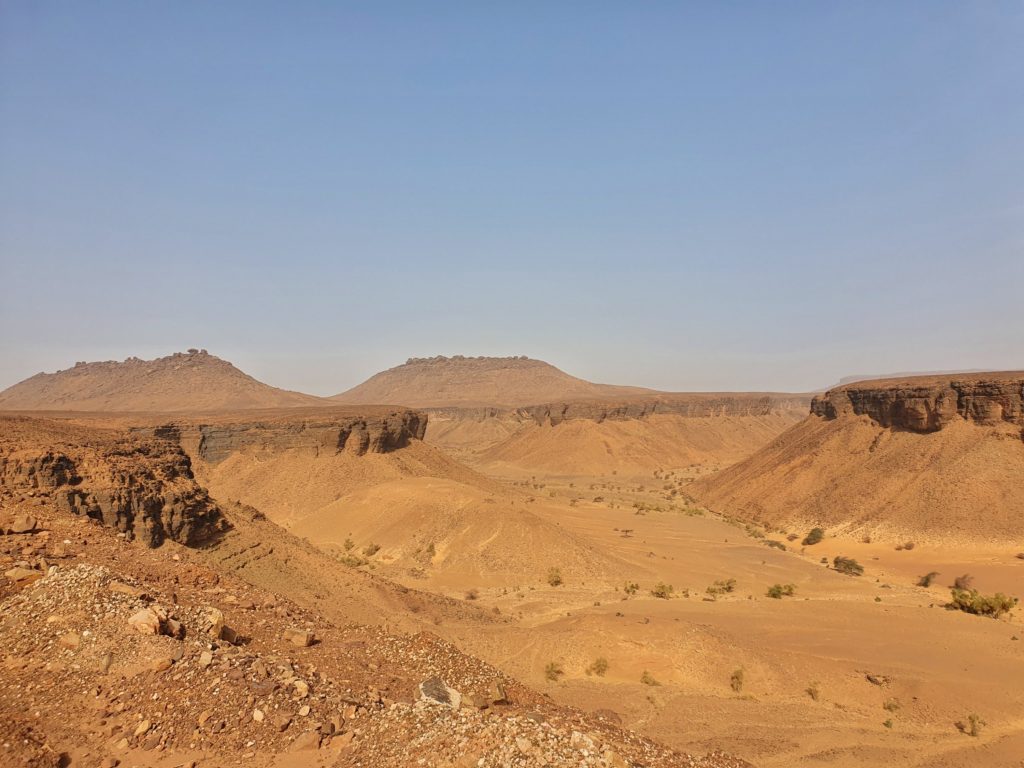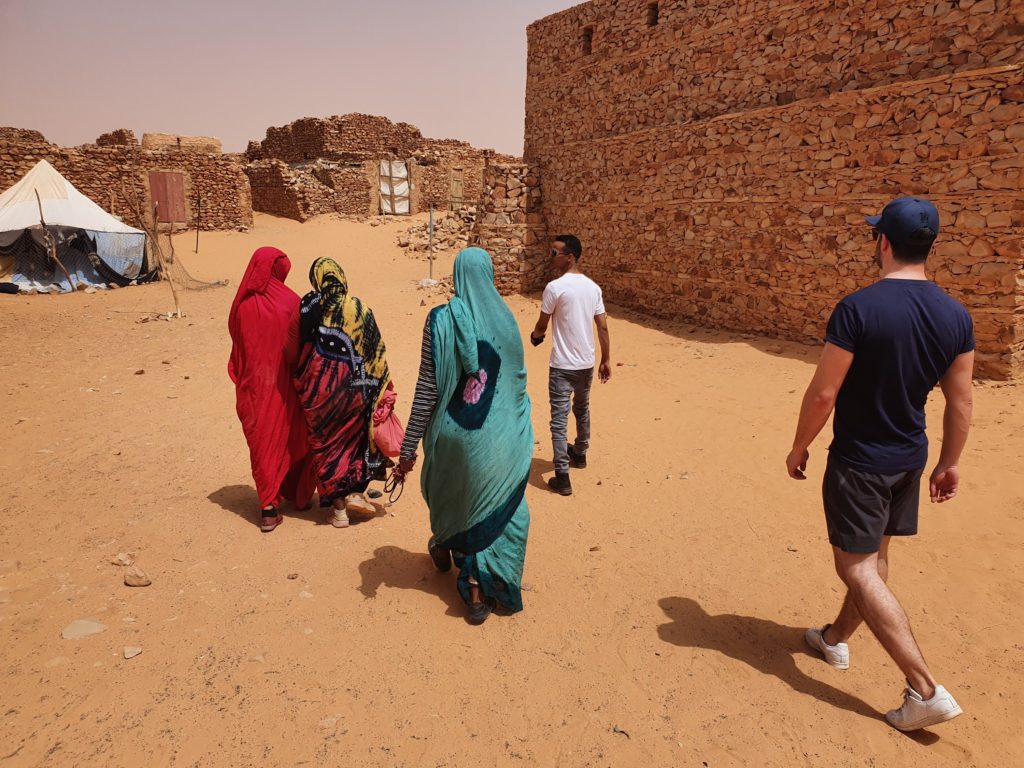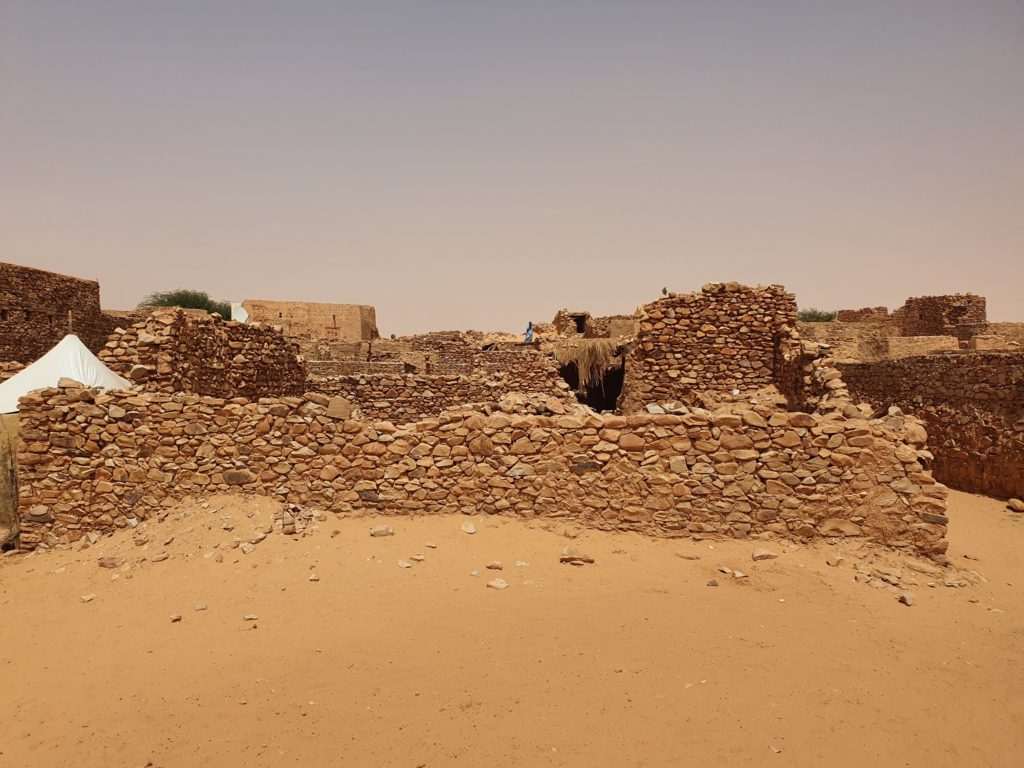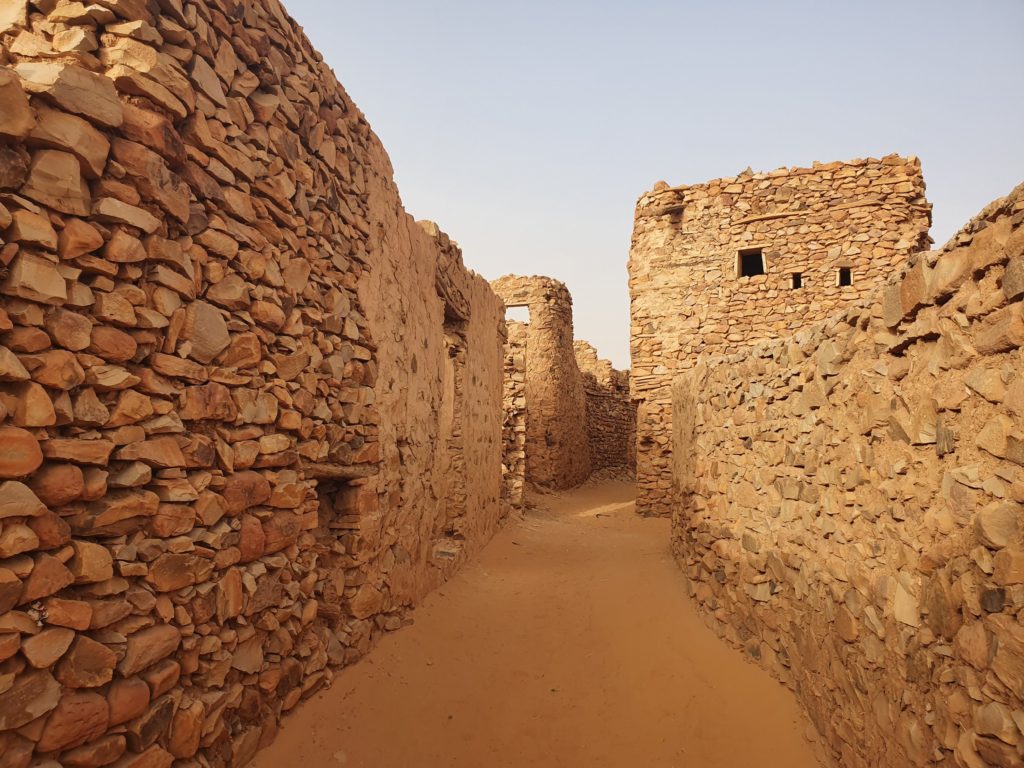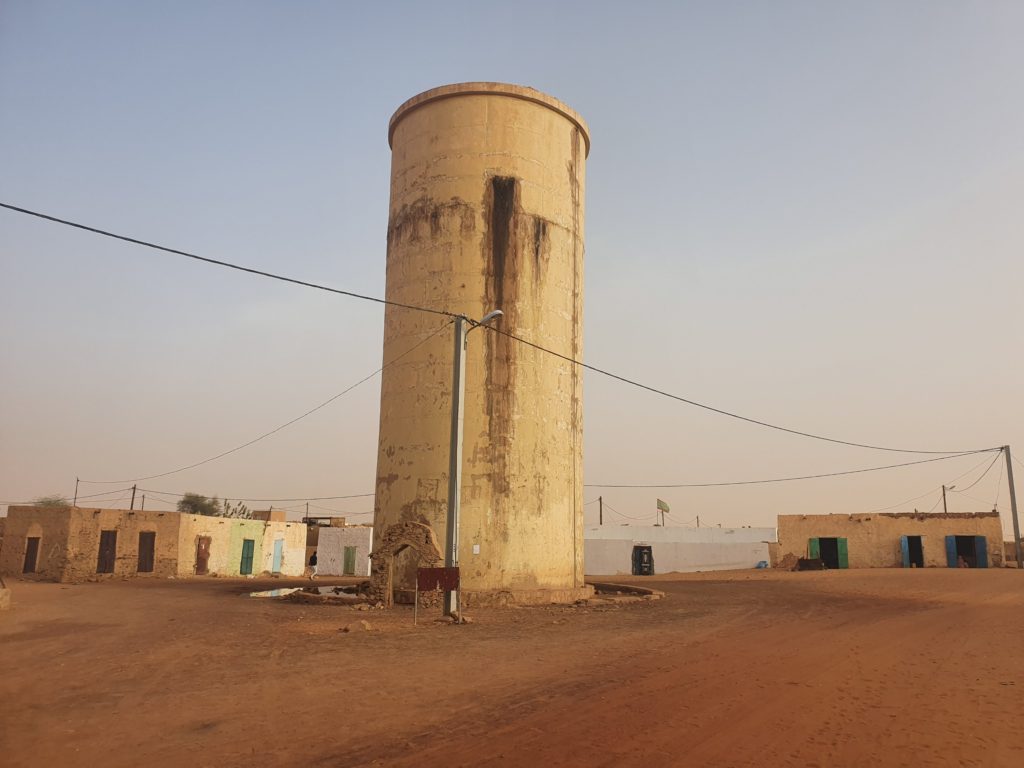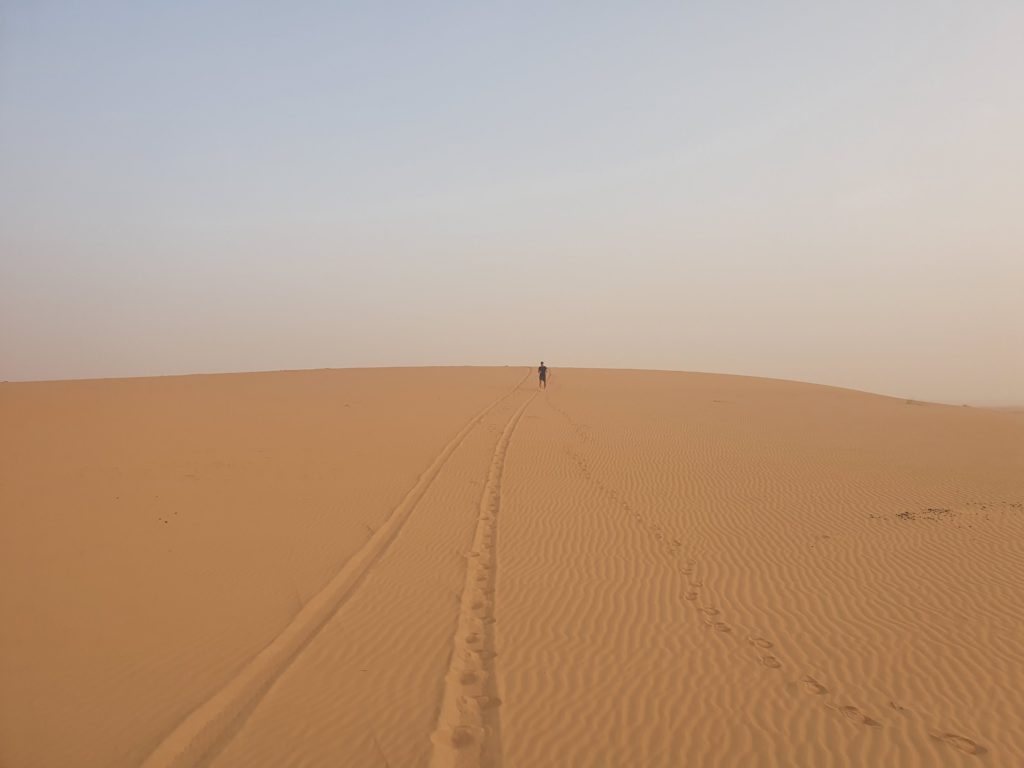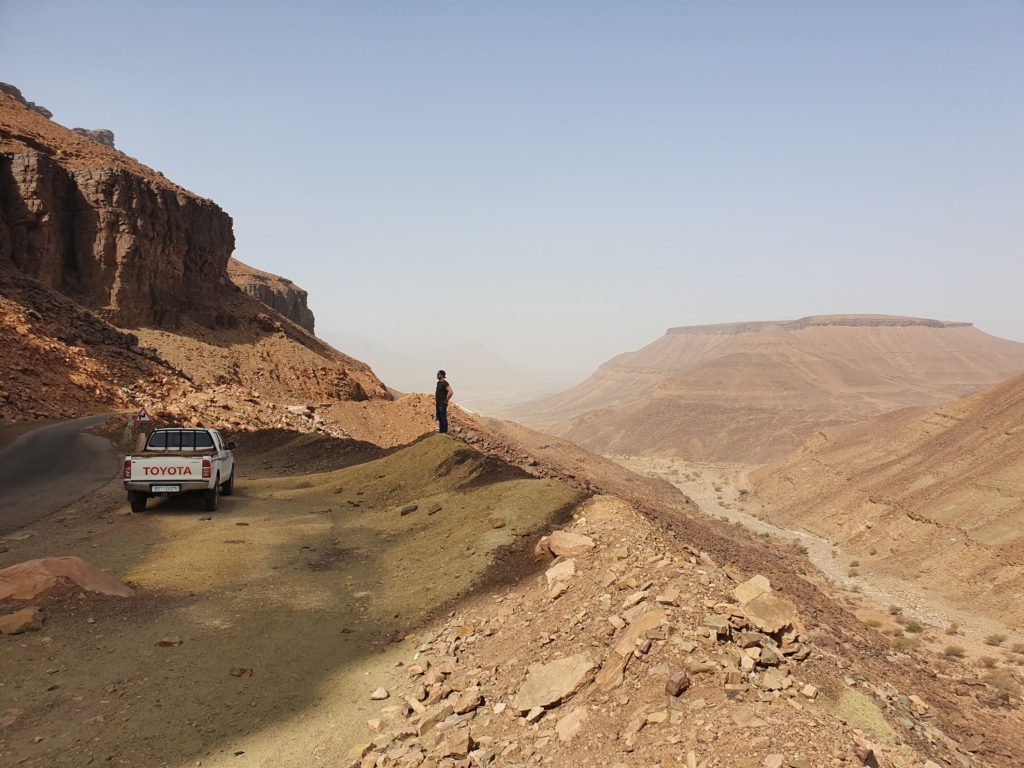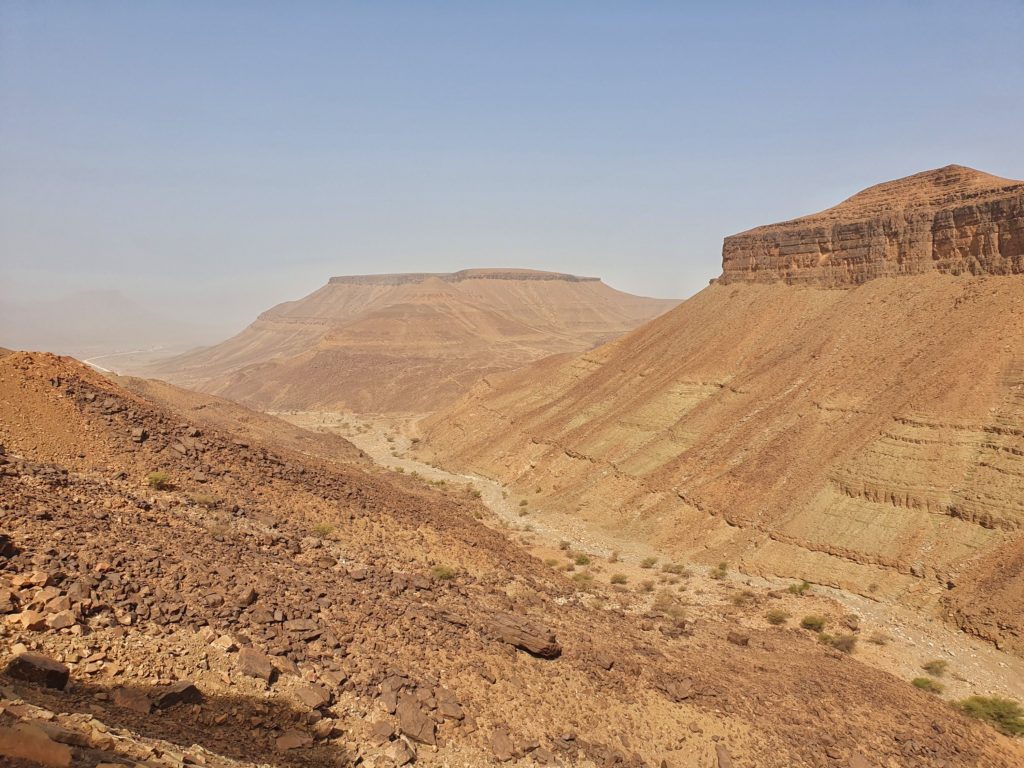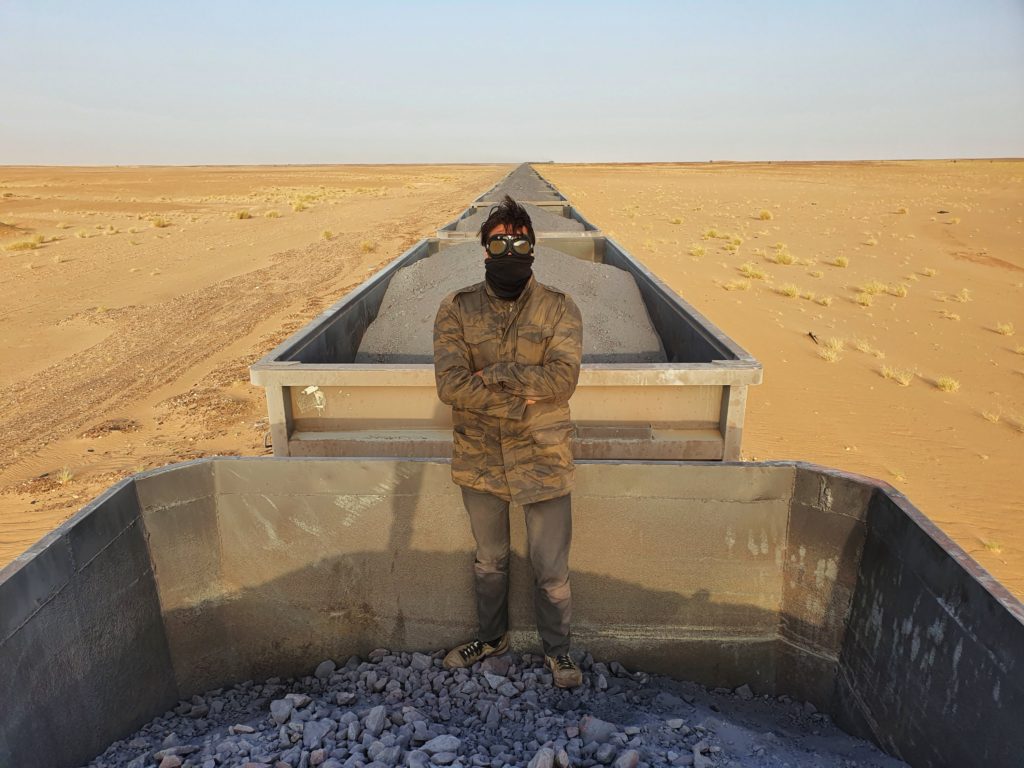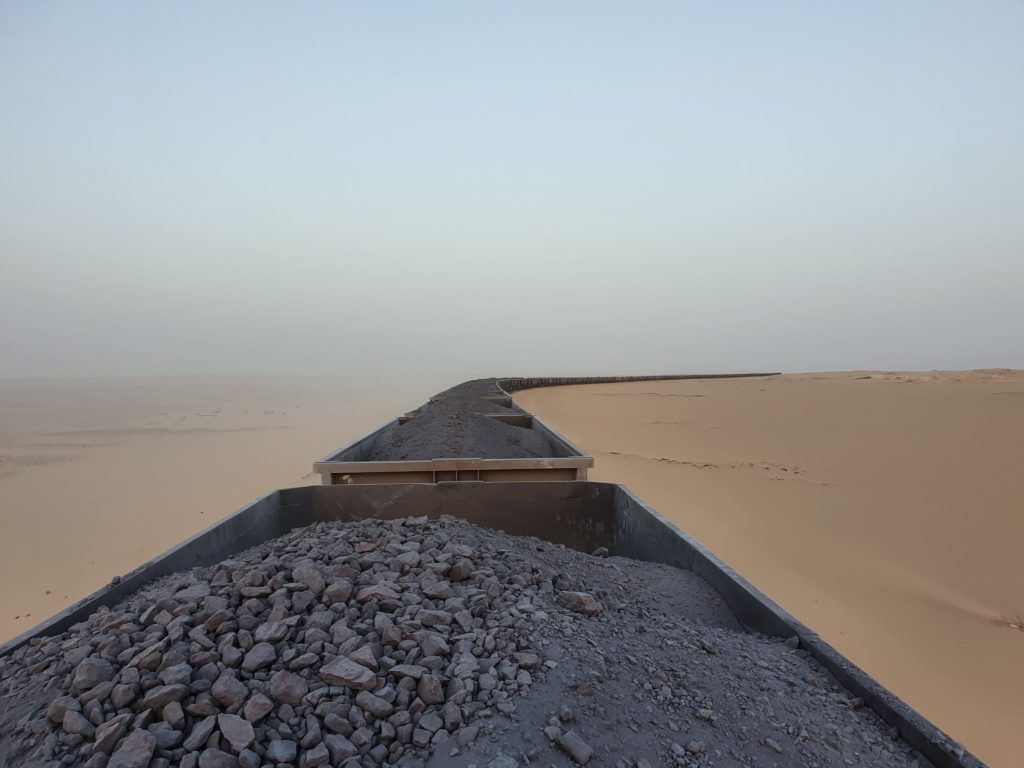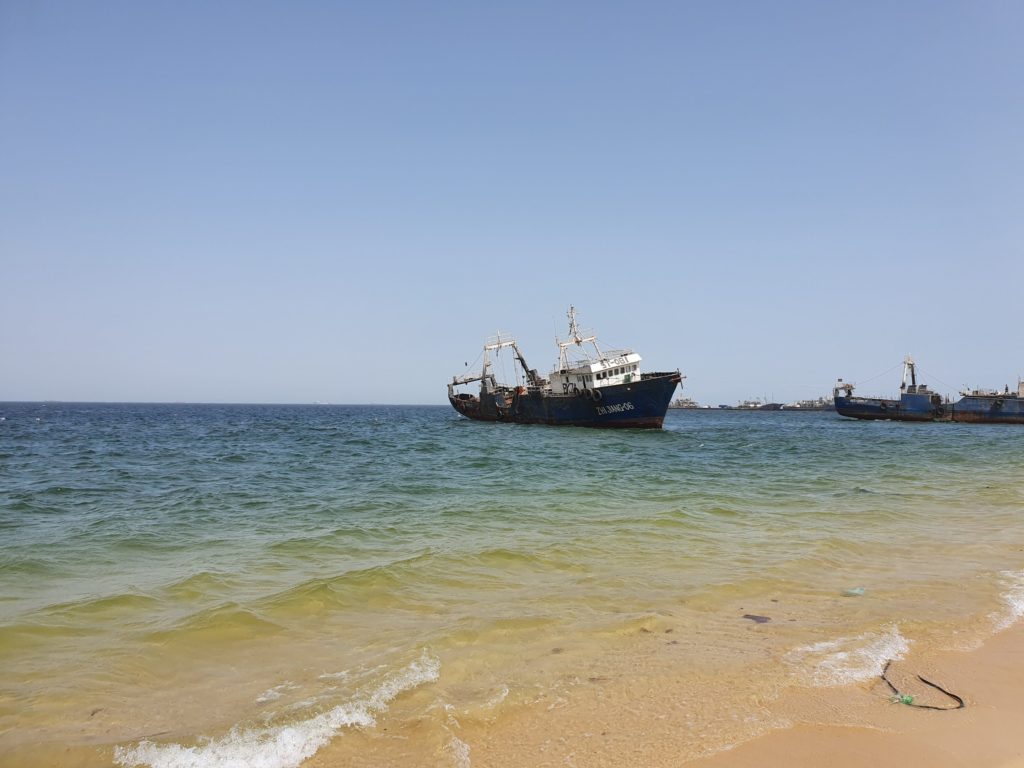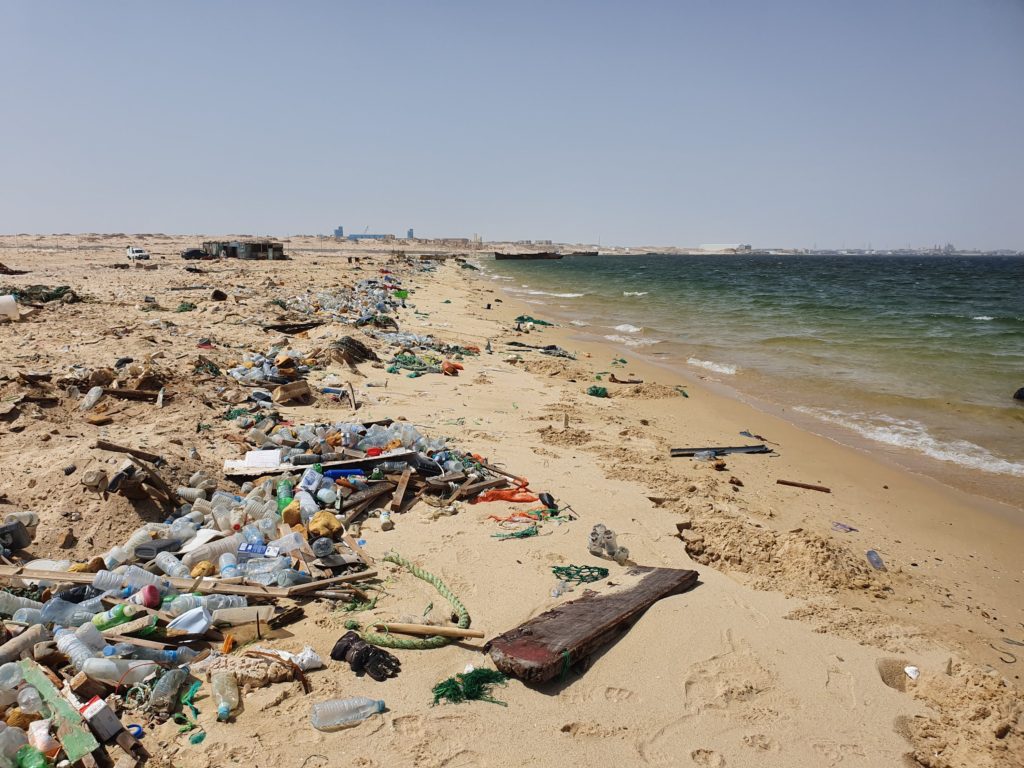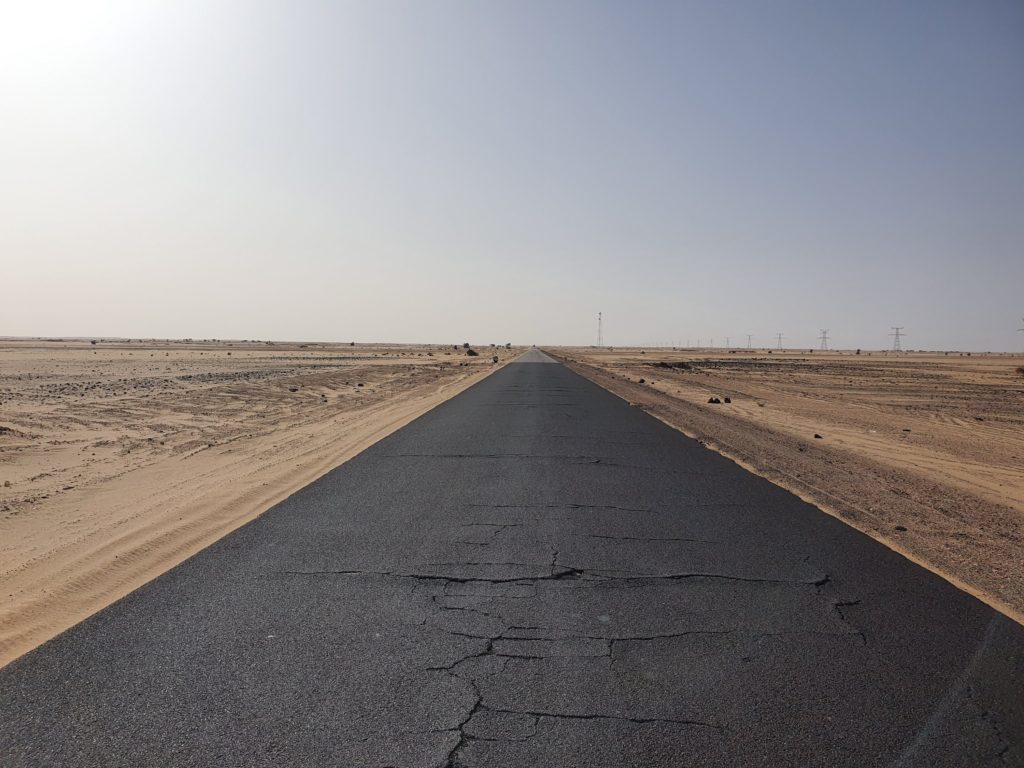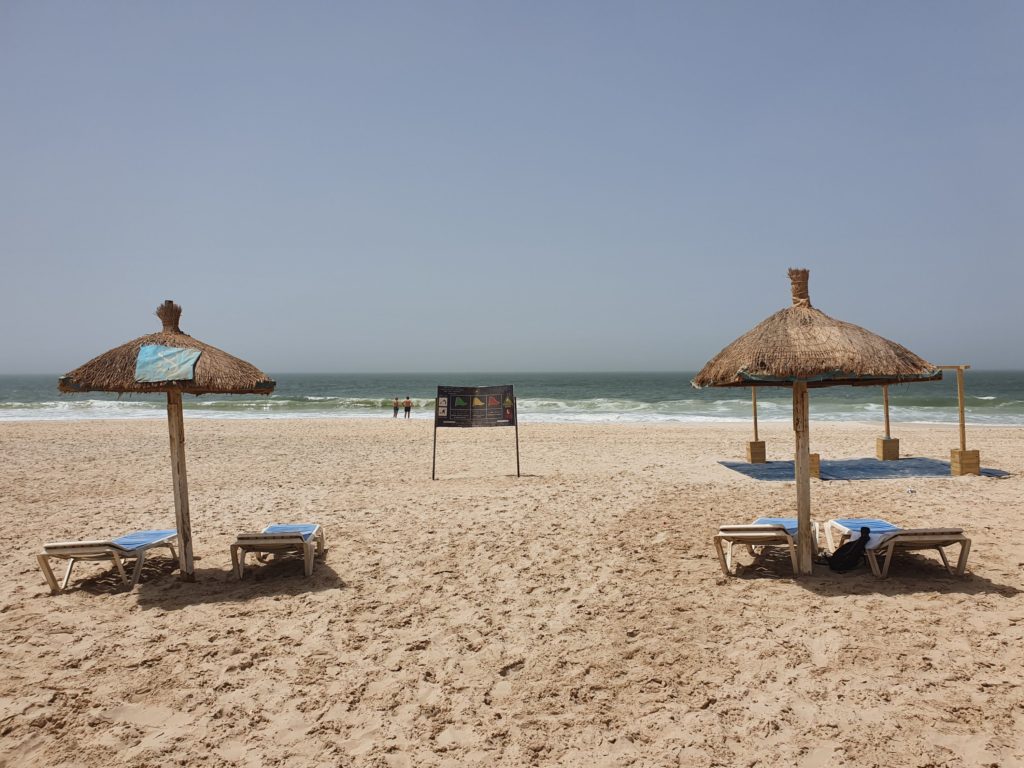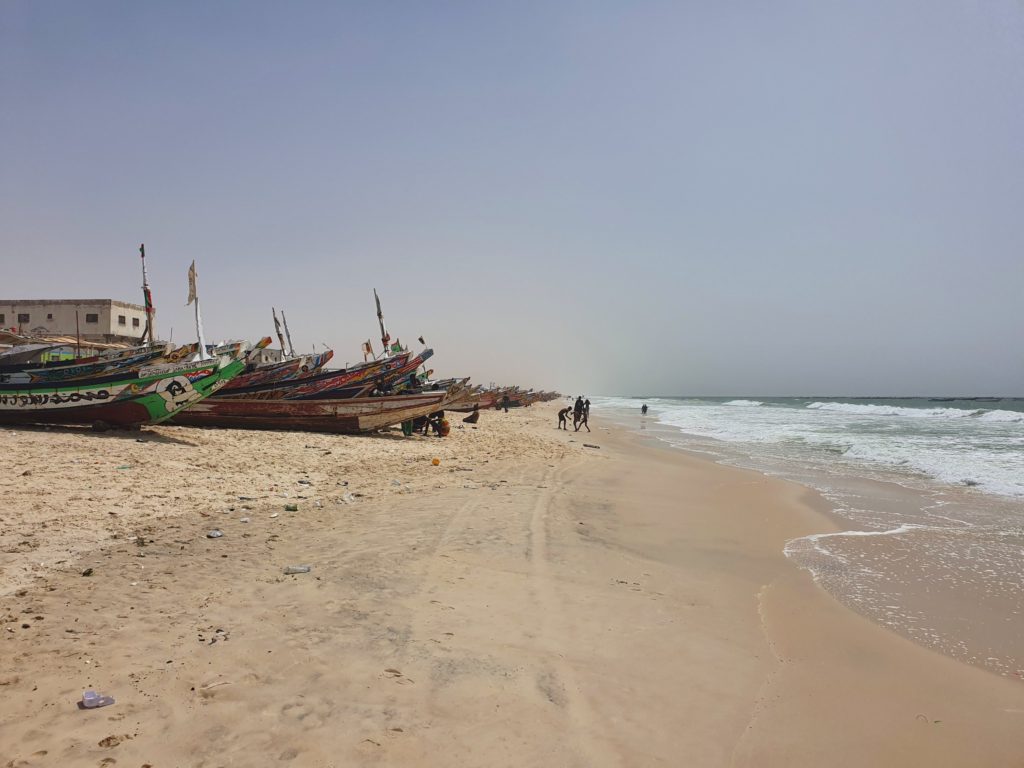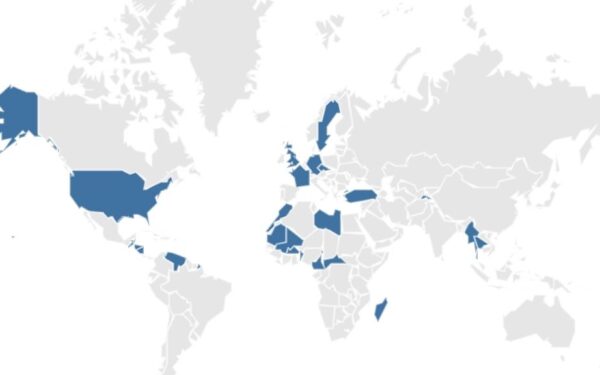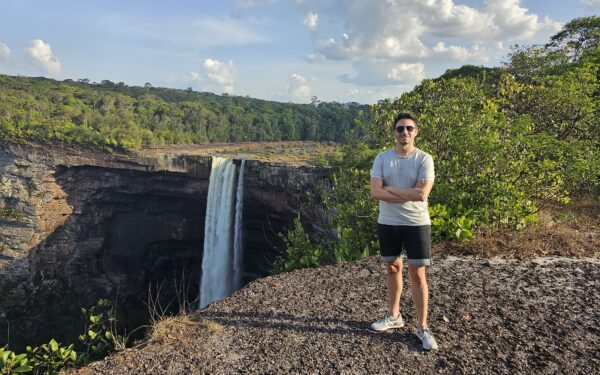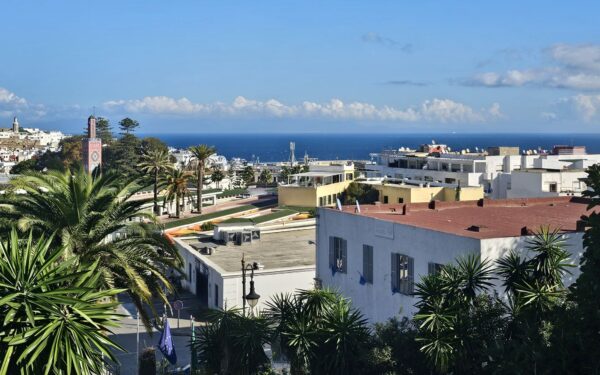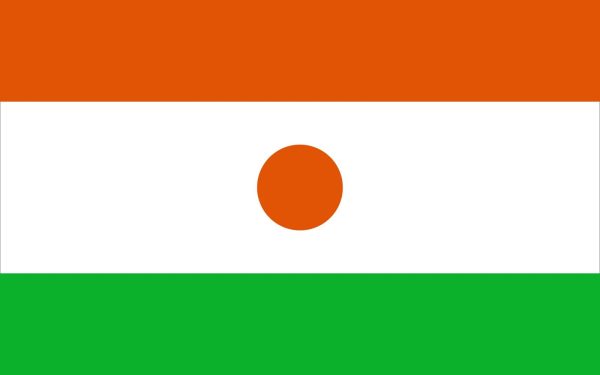Trip Report: Mauritania
Date of visit: March 2020
There are still a few adventures out there in the world. And I do not mean visiting the monkey park in Bali or eating fried insects in the streets of Bangkok. I mean real adventures.
I am talking about a 13-hour trip across the Sahara on top (!) of the longest train in the world.
This adventure takes place in Mauritania, a rather unusual travel destination or respectively a country that is probably completely unknown to most people in the western world. Mauritania is located in West Africa, south of Morocco (or the Western Sahara, if you consider it an independent country) and north of Senegal. To the east, the country borders Mali and also has another small border with Algeria.
In Mauritania, an iron ore train runs daily a 704-kilometer route from the interior of the country to the coast and back again. The mining of iron ore is one of the most important industries in Mauritania. That’s why a railway line was built from a mine near Zouerat to the coastal town of Nouadhibou, where the iron ore is shipped to the world. By the way, it is the only train route in the country.
The good news for adventurous tourists is: you can ride on this train. Free of charge! You neither need a reservation nor a ticket. You just have to be crazy enough for this trip and hop on top of the iron ore cargo as soon as the train arrives.
Mauritania’s iron ore train
The ride on the iron ore train will offer a few challenges, though. It starts with the fact that nobody knows exactly when the train will leave. Therefore, you just arrive early enough at the train station and wait until the train passes by.
“Which train station?” you may ask. Most of the travelers who take this ride do not travel the whole distance, but get on in Choum. This shortens the distance from 704 to 450 kilometers. Choum is located near Atar and is basically not even a real village but rather a train station with a few houses around it.
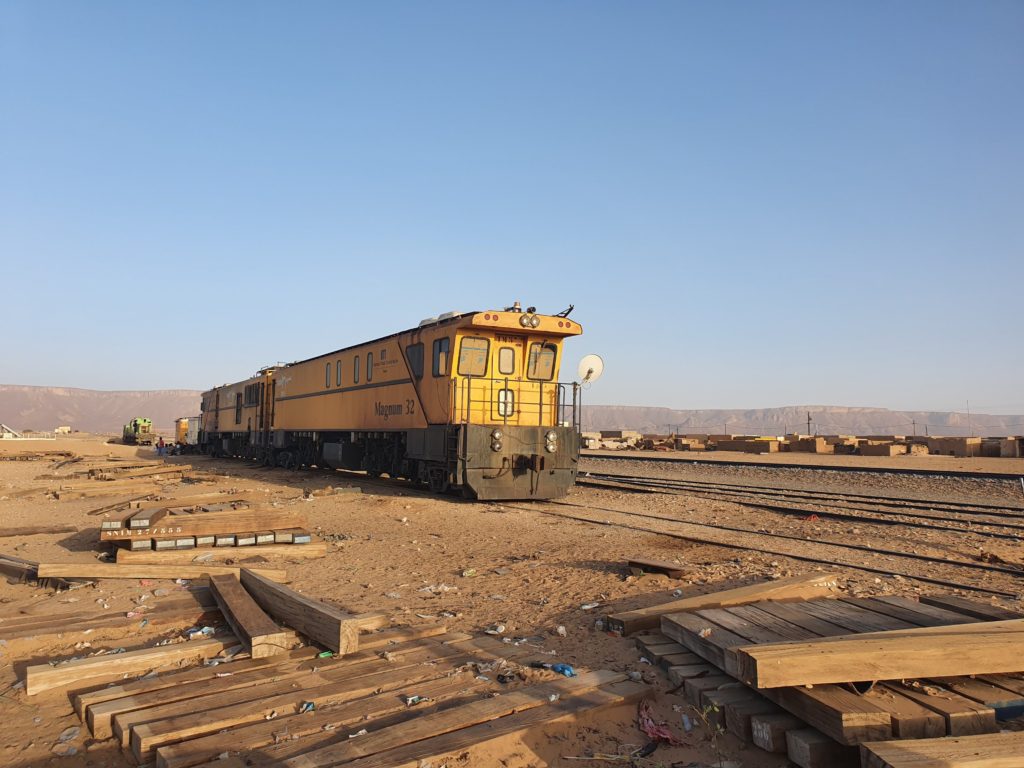
The train is supposed to arrive from 16.00 on. That means, in the best case it will actually arrive in the late afternoon, but it can also become midnight or even later. In some very rare cases it does not arrive at all.
Our group, consisting of Matt, myself and our tour guide Mohammed, arrived in Choum at 1 pm. Before that we bought some food and water in Atar, the nearest city to Choum. Because – as you can probably imagine – as soon as the iron ore train leaves, there is no opportunity to buy food or drinks until the arrival. Another circumstance that you have to keep in mind.
The third challenge is the weather. During the day it is about 37 degrees, but at night it can cool down considerably. Therefore, we had organized two blankets. The blankets can be rented for 4 euro per day in the capital Nouakchott. But you pay for them from the time you pick them up until you bring them back. In our case it was five nights, so 20 euros.
In Choum we were fortunately not exposed to the heat while we were waiting for the train. Our tour guide works together with the manager of the train station, in whose house we were able to kill time. And so we sat for hours in the cooled living room with the manager’s family and watched Al-Jazeera. Occasionally, they served us tea and in the evening they even cooked for us.
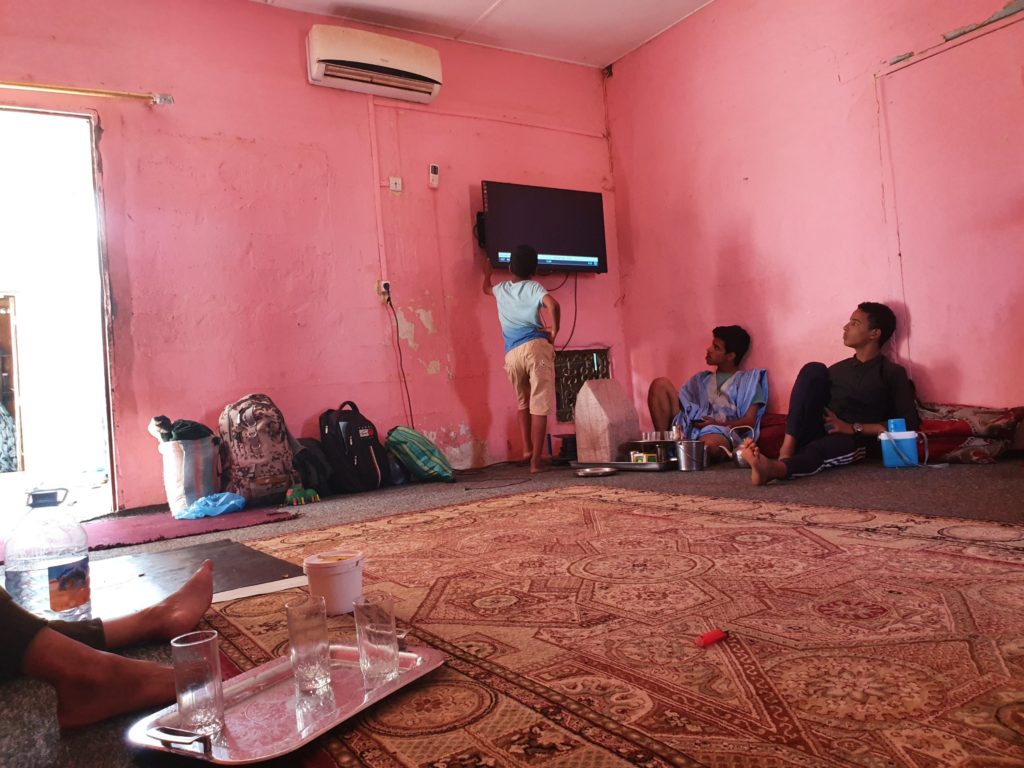
At 16.00 o’clock the manager informed us that the iron ore train had not left Zouerat yet. It takes about five hours from Zouerat to Choum. So we knew at that time that the train would not arrive before 9 pm. My best case scenario was thus no longer realistic. I would have loved to enjoy the sunset on the train and arrive in Choum in the early morning hours.
So I hoped that the train would actually arrive before midnight. Because there was still the worst case scenario, namely that the train would not arrive until late at night. This would have meant that we would have done most of the trip during the day, which would have exposed us to the full power of the sun for hours.
Hour after hour passed. It was a very long and also boring day. But at some point we received the message that the train had left the mine. That meant that the arrival time in Choum would be between 22.00 and 23.00. However, we were told that at 7 pm another train would pass through Choum. We learned that there are three trains a day, but the first train never stops anywhere and therefore you cannot travel with it.
Since we wanted to see the iron ore train in daylight, we positioned ourselves next to the track around 19.00. It was about 19.20 when the train passed through. And what we saw was tremendous. It took three minutes until the train completely passed by. Two locomotives pulled the 96 wagons loaded with iron ore.
Sometimes, there are four locomotives pulling more than 200 wagons. The total weight of the train can be more than 17,000 tons. By comparison, the Airbus A380 has a maximum weight of 560 tons.
The iron ore train is often called the longest train in the world. The length of the train is said to be between 2 and 3 kilometers. The Guinness Book of World Records, however, lists another train as the longest. But in the end, it does not matter anyway. In any case, let’s just say that the iron ore train in Mauritania is among the longest trains in the world.
Shortly after the train left our sight, we returned to the house and waited until around 9.30 pm, when Mohammed suddenly told us to slowly get ready. By slowly he meant maybe 90 seconds, as the train was only a few minutes away from Choum. The good news was that the train would not leave until the station manager gave the green light. That gave us some extra time.
We hurried anyway. A car took us to the rail tracks, where the iron ore train was passing by. It took a while until the train came to stop and now we had about five minutes to prepare ourselves. Mohammed jumped onto the first wagon, but decided that it was not a good one. The second one seemed to be better.
Now, we handed up all our luggage, which consisted of the blankets, the food and the water, three sleeping mats and some other bags. After that, we jumped onto the train as well. We were set now. It was now shortly before 10 pm and the journey was going to start.
13 hours through the Sahara
What followed was epic. Under the incredibly clear sky full of stars the iron ore train rolled and disappeared with us into the depths of the Sahara. A turban wrapped around our heads, as well as a breathing mask and protection goggles made sure that the iron dust and sand stirred up by the wind did not get into our noses or eyes.
Especially the goggles were absolutely necessary, as you cannot keep your eyes open for long without it. Breathing masks or at least a scarf around your mouth and nose is also a must. Not having protection for your eyes, your nose and your mouth is not only very uncomfortable on the train. It could also lead to severe damage to your eyes and lungs.
After about two hours I fell asleep and woke up six hours later at dawn. Was it a comfortable night? No, definitely not. It was also quite cold, as expected. We all wore winter clothes and used the blankets, too. However, I imagined both the comfort and the temperature to be much worse. So in the end I was more than happy that I could sleep six hours.
The real highlight of the trip was the sunrise. Although the ride under the stars was spectacular, the daylight ride was even more exciting. Sitting on top of an iron ore train, observing the vastness of the Sahara on the left and on the right and watching the sunrise at the same time is definitely not an everyday experience.
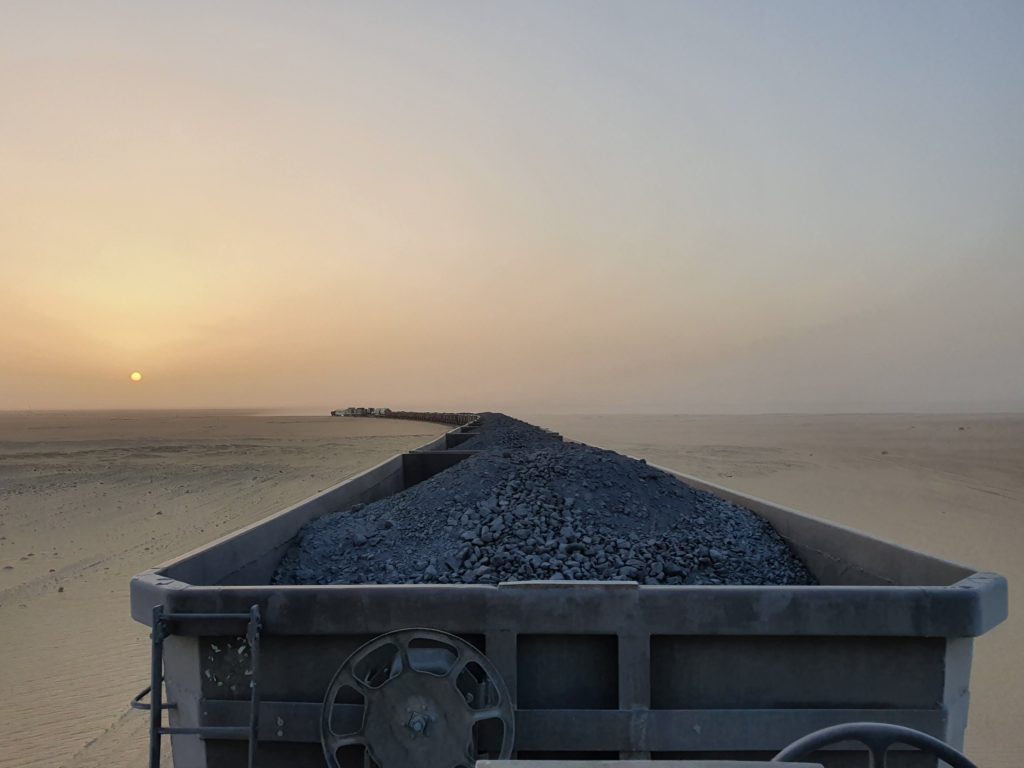
Meanwhile we also realized how dirty we were. Practically the whole face was covered in iron dust – despite the best possible face protection. Later after our arrival we even noticed that the iron ore had fought its way through our clothes. Even our feet were pitch black, although we were wearing shoes and socks all the time.
Therefore, you better bring clothes for this train ride that you will never use again afterwards. You will get dirty and by that I mean you will get dirty like never before in your life. I deliberately brought old clothes with me that I did not need anymore. After the ride, I asked our driver if he wants to keep them and he gratefully accepted.
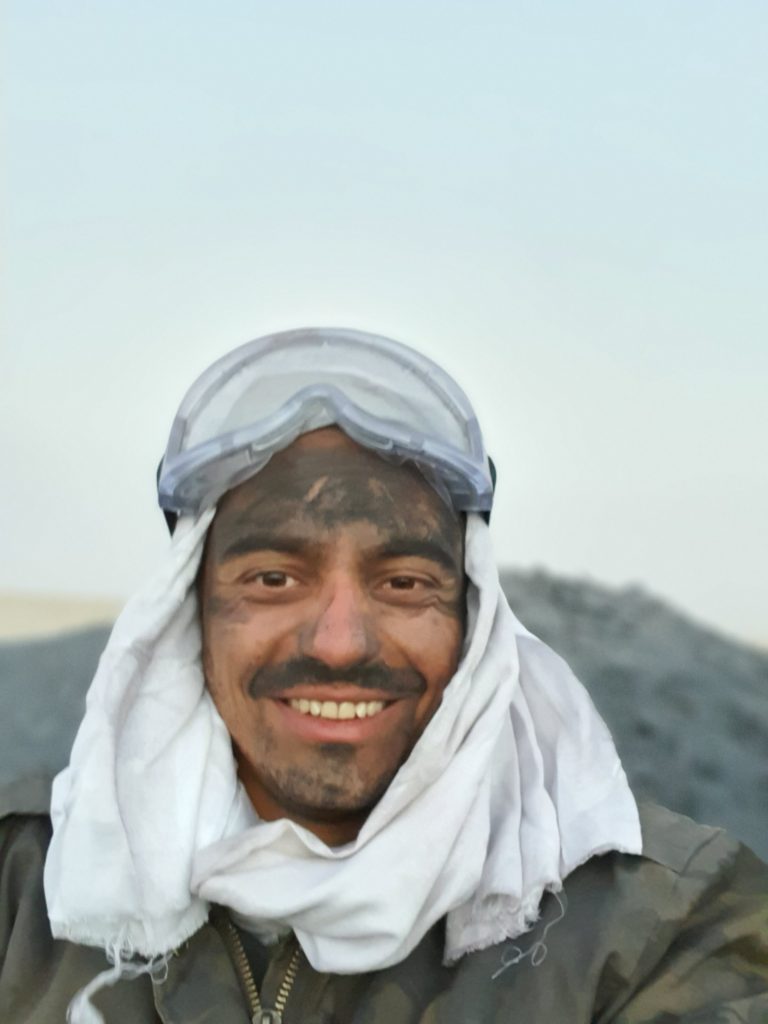
“Has anyone ever fallen off the train?” I asked Mohammed. Our tour guide answered that once a local person jumped off the train because he underestimated the speed of the train. He died. But my question came because the train was sometimes shaken violently and I could have imagined that it could have thrown someone over the edge of the wagon.
I had to keep reminding myself that the iron ore train is not a regular tourist activity. Moreover, it is not even an official mode of transport. Sometimes a passenger car is attached at the very end of the train, but the locals usually prefer to ride on the iron ore (for free). Although I think that the ride is more or less safe, I do not think any insurance would cover any possible damage connected with the iron ore train.
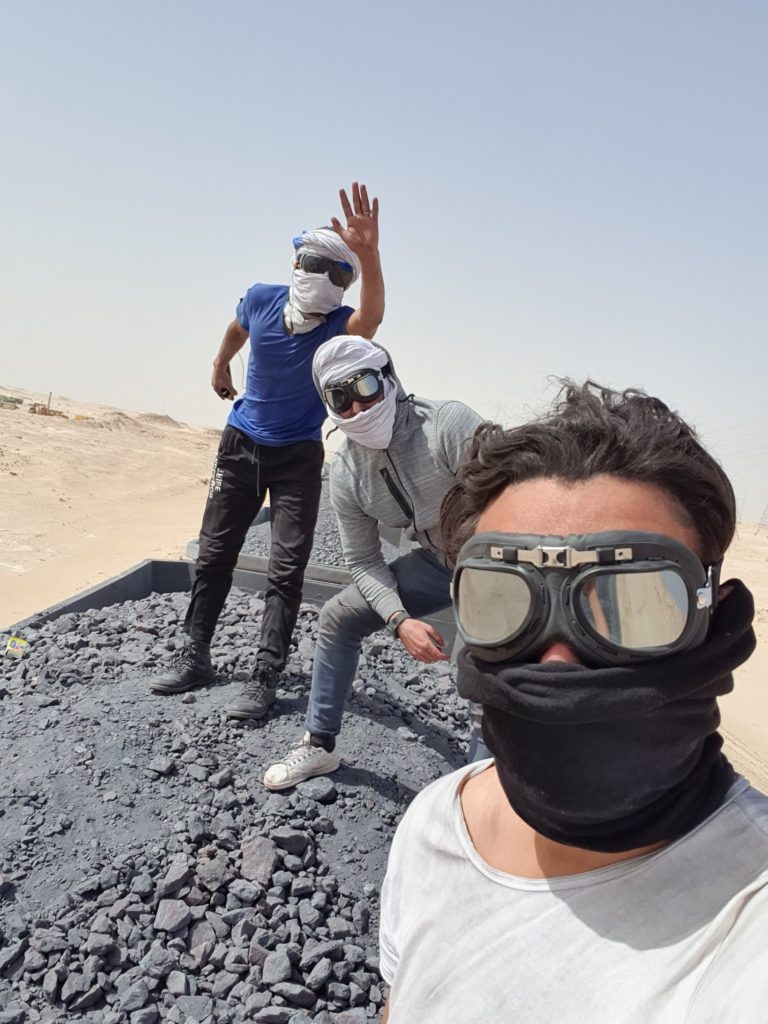
The train continued with a speed of about 40-45 km/h towards Nouadhibou. We were now in the last two to three hours of the journey. The wind cooled us down, as the temperature had probably reached 30 degrees by now. But it was just fine. March is probably an ideal month for this trip, as it is not too hot during the day and not too cold at night.
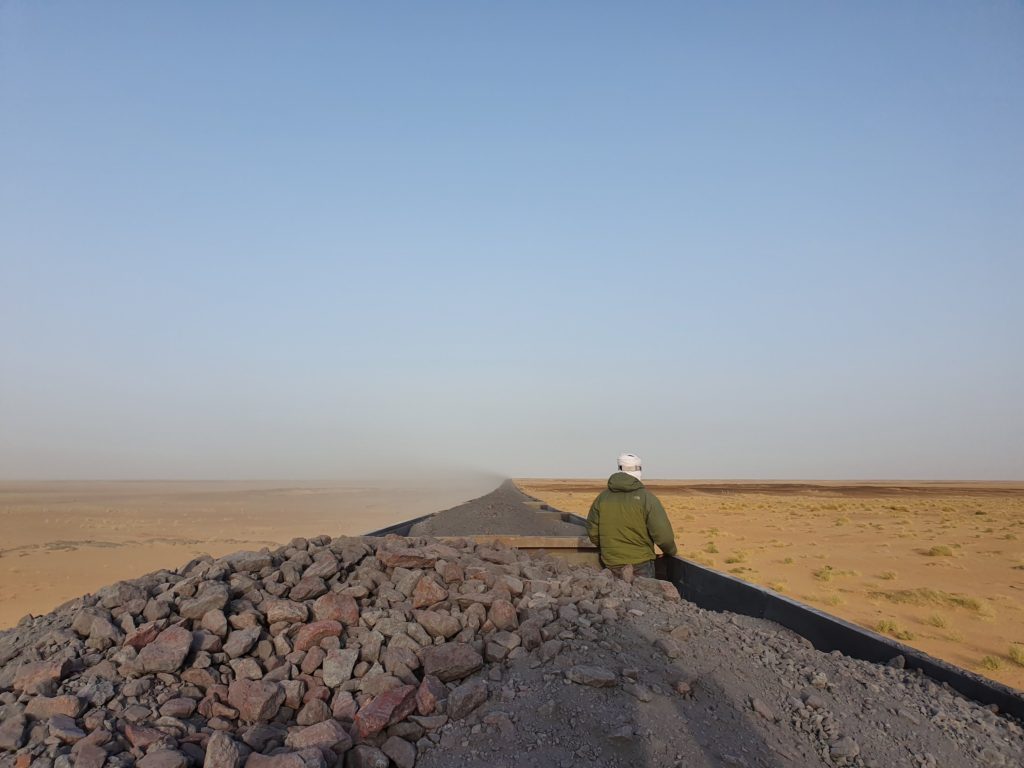
Sometimes camels approached the train so that Mohammed threw some iron stones in their direction. Camels apparently get run over by the train sometimes, so Mohammed wanted to keep distance with his action.
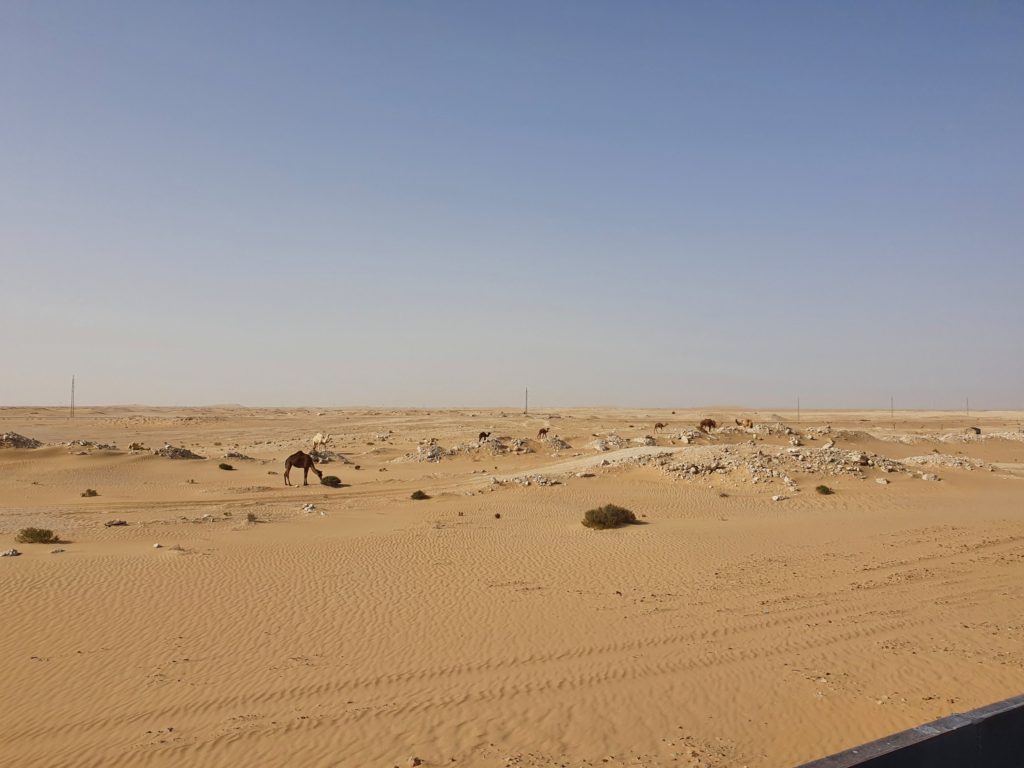
Around noon the train rolled into Nouadhibou. We had made it. It was an epic journey that was far less strenuous than I had imagined. I often read about people who said they enjoyed the train experience but would never do it again. I, on the other hand, would definitely do it again, as this iron ore train ride is one of my absolute travel highlights of all time.
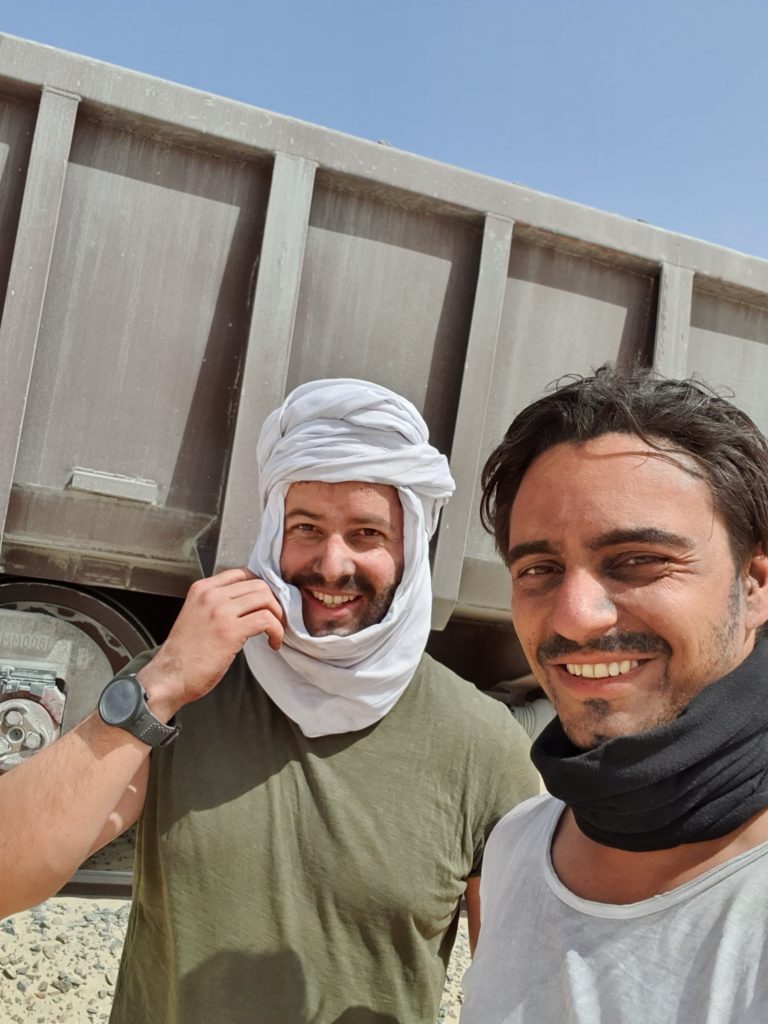
By the way, you can also make the journey in the opposite direction. From Nouadhibou to Zouerat. But then the train cars are empty, which in my opinion would only be half as much fun.
The days before the iron ore train ride
Although the iron ore train was the highlight of our trip in Mauritania, the country offered us some other fantastic activities. We spent the first three days in the Sahara, where we witnessed landscapes like from another world.
The starting point of our trip was the capital Nouakchott, from where we drove five hours deep into the desert. The journey led us through a road that went straight for hours and offered the same landscape from the time we left the capital until we arrived in Terjit, an oasis in the middle of the Sahara.
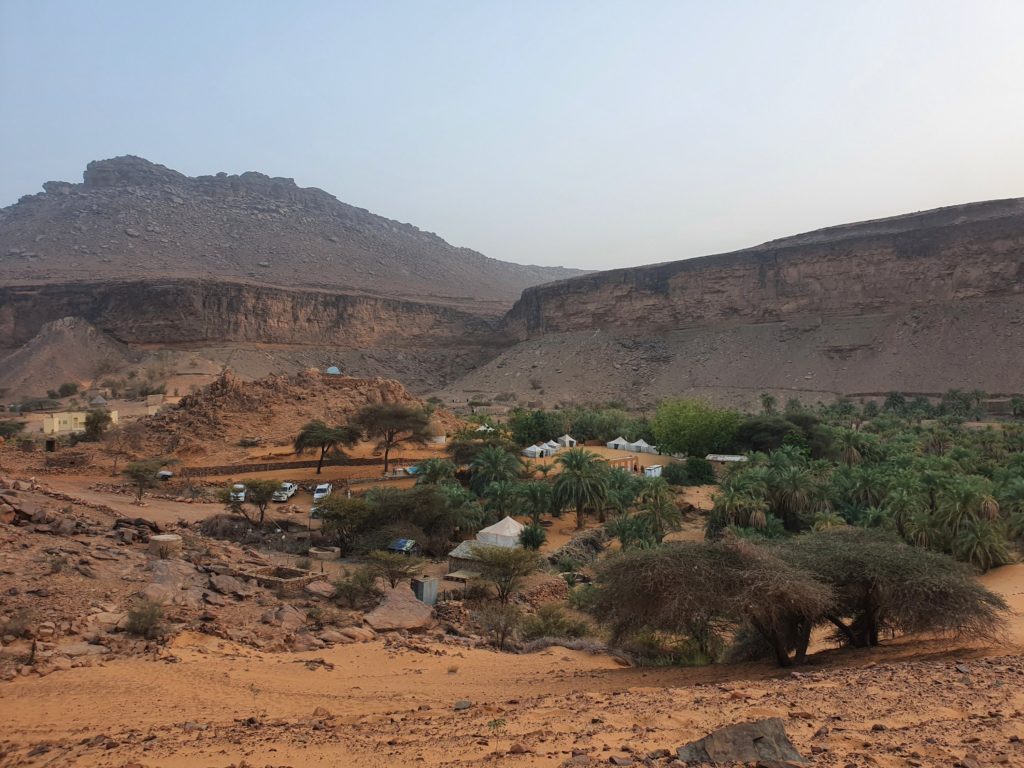
The hours from noon until the late afternoon were always incredibly hot in the desert, so we often rested during this time and postponed the activities to the morning or evening. Fortunately, it was okay for us to wear shorts, which made the brutal sun in the desert a bit more bearable. Mauritania is a very conservative country, but according to our tour guide the people accept that tourist wear shorts.
In Terjit we visited the oasis and the mountains around it shortly before sunset. The oasis was fascinating and you can even cool down in a pool. Actually, it was only the second desert oasis I have seen so far and I definitely enjoyed the time we spent there.
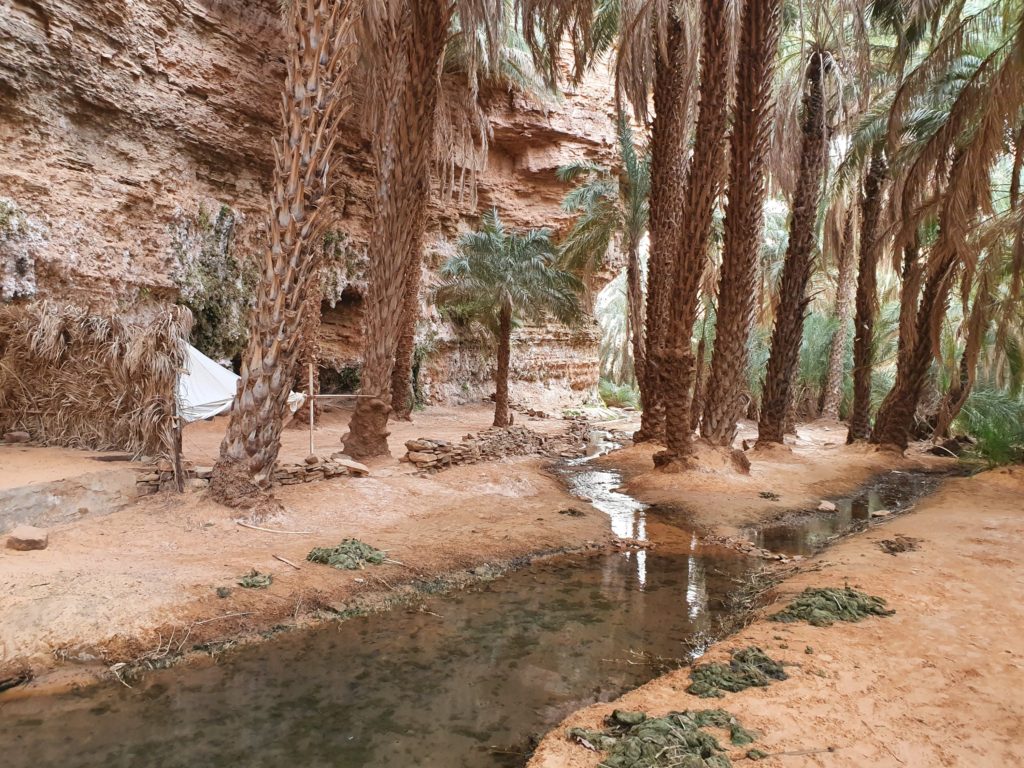
Afterwards we spent the night in a campground about 10 minutes away from the oasis. To my surprise we also met a relatively large number of tourists there, because Mauritania is said to be one of least visited countries in the world. Apart from us there must have been 20-30 other travelers there. Most of them were French. Air France even flies once a week to the city of Atar in the Mauritanian desert.
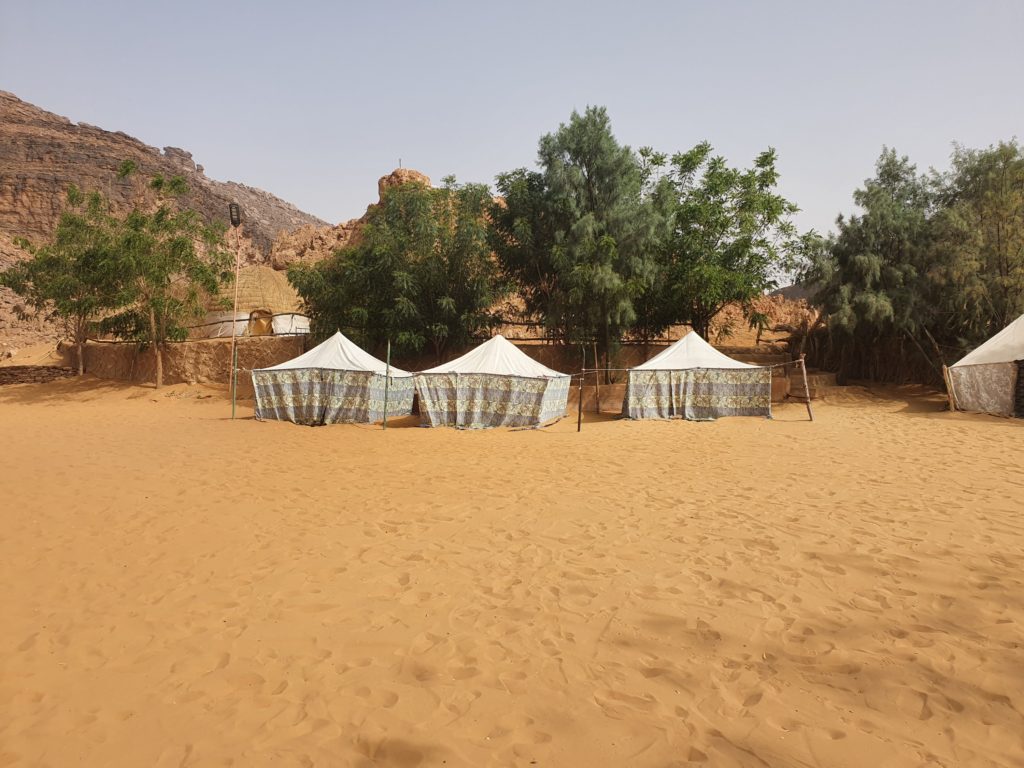
On the second day we visited Chinguetti. The village belongs to the UNESCO World Heritage Sites and is a fascinating town because of its architecture and history. It is a historical trading post inhabited for thousands of years and the many stone houses indicate how incredibly old this town is.
But Chinguetti was also the place where the locals were particularly pushy. In the whole old town there are women sitting around offering some kind of merchandise for tourists and some of them followed us over a longer distance to sell us their stuff. Everything was harmless, but also a little bit annoying.
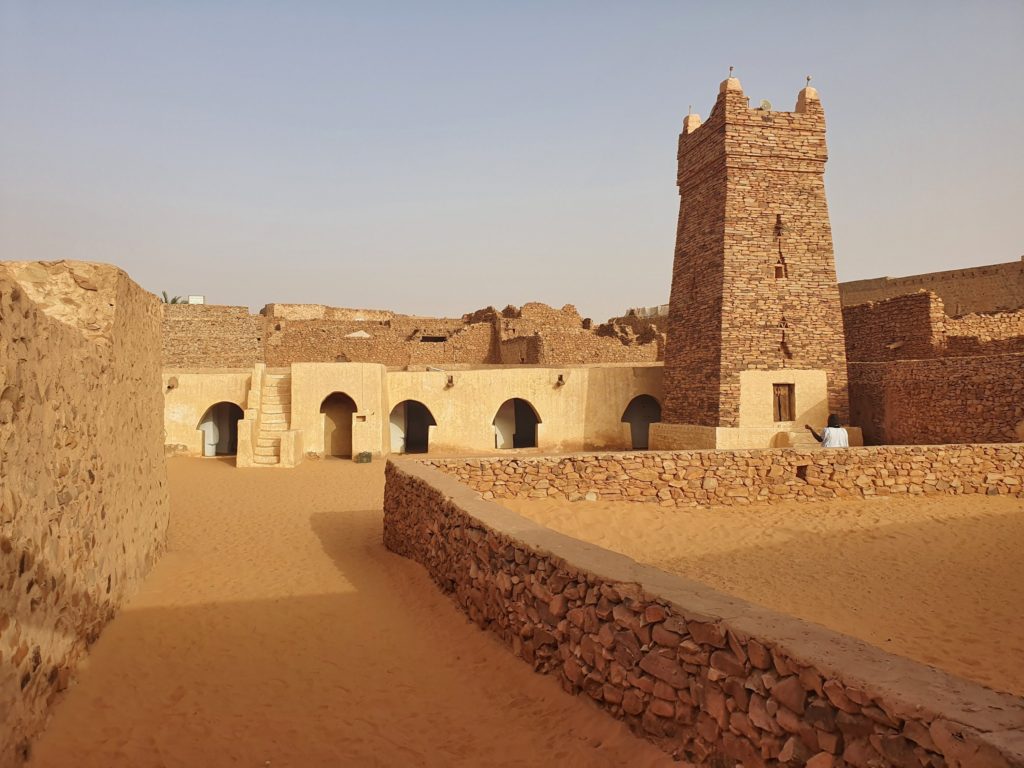
Originally, the plan was to leave Chinguetti towards Ouadane in the early afternoon. However, we spent an enormous amount of time in the car during the first two days, so that we asked for a change of our travel route. It already took five hours from Nouakchott to Terjit on the first day. Plus another four hours from Terjit to Chinguetti. It would have taken three more hours to Ouadane, plus three more hours the next day to drive back.
That was too much, especially since we only spent a maximum of thirty minutes in Chinguetti and were supposed to leave afterwards. So we asked if we could skip Ouadane and stay in Chinguetti instead, which was easily possible for a small extra charge. This gave us the opportunity to see more of Chinguetti plus we could watch the sunset on a sand dune, which was also a fantastic experience.
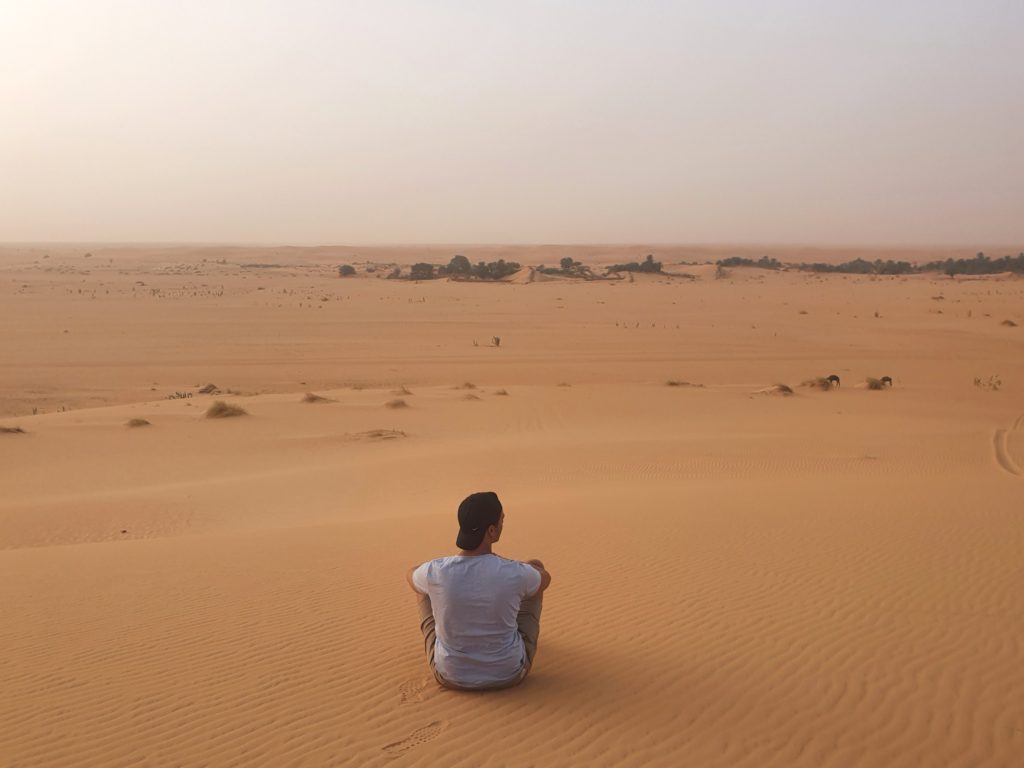
In hindsight, I must honestly admit that I do not regret that we skipped Ouadane. In the pictures you find online, Ouadane looks almost identical to Chinguetti. Spending an extra six hours in the car for this would not have been worth it for us therefore.
Mauritania is not only one of the least visited countries, it is also one of the least densely populated. Actually there are only nine countries with a lower population density. Mauritania is a large country (the 29th largest in the world and about three times the size of Germany), but only 4.4 million people live there. The reason for this is that most of the country is desert and therefore does not offer the best habitat.
For the traveler, however, this means that you can marvel at incredibly vast desert landscapes without seeing any people. So the real highlights of the country, apart from the iron ore train, were not places like Terjit or Chinguetti (which were also great), but the landscapes we saw during driving from one place to another.
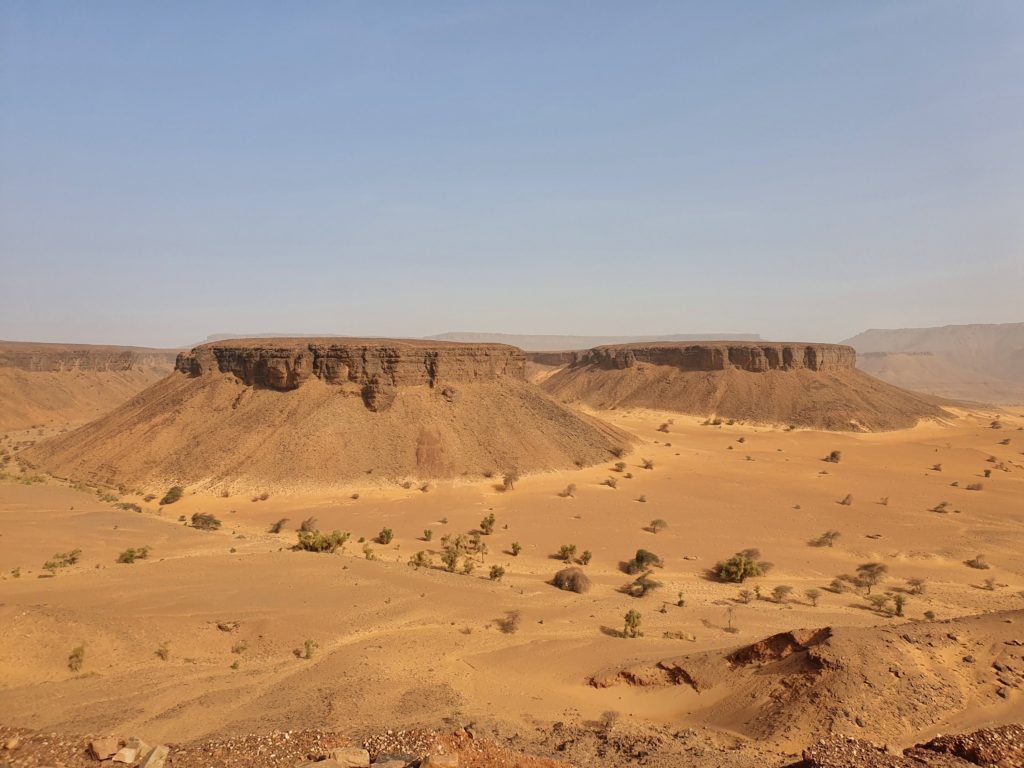
With Nouakchott and Nouadhibou we also saw two of the three biggest cities of Mauritania. Both were interesting for a short stay, but I would not recommend anyone to travel to Mauritania to see these cities only. The pearls of the country are definitely in the desert.
Traveling in Mauritania – an overview
For all those of you interested in traveling to Mauritania, I hereby write a few tips that might help you.
Although you can travel Mauritania independently, I think it would be very challenging. Even for seasoned travelers. The country has practically no tourist infrastructure and if you do not speak Arabic or French, communication will be another problem. For this reason I recommend to travel Mauritania with a guide.
You can find some tour operators online and we have contacted three of them. In the end we chose Time for Mauritania run by Hademine. His offer was the cheapest at €1150 for two people. However, he said that he will try to get a third traveler on board, which was okay for us. In the end, it was only Matt and me anyway.
The price was not the only reason why we decided to choose Time for Mauritania, though. Another argument was the perfect English of Hademine. Other operators only spoke French. Moreover, I also found the other operators not as professional as Hademine, as it sometimes took very long until they answered my questions. One operator even needed three weeks to send me a quote (which was the most expensive in the end anyway).
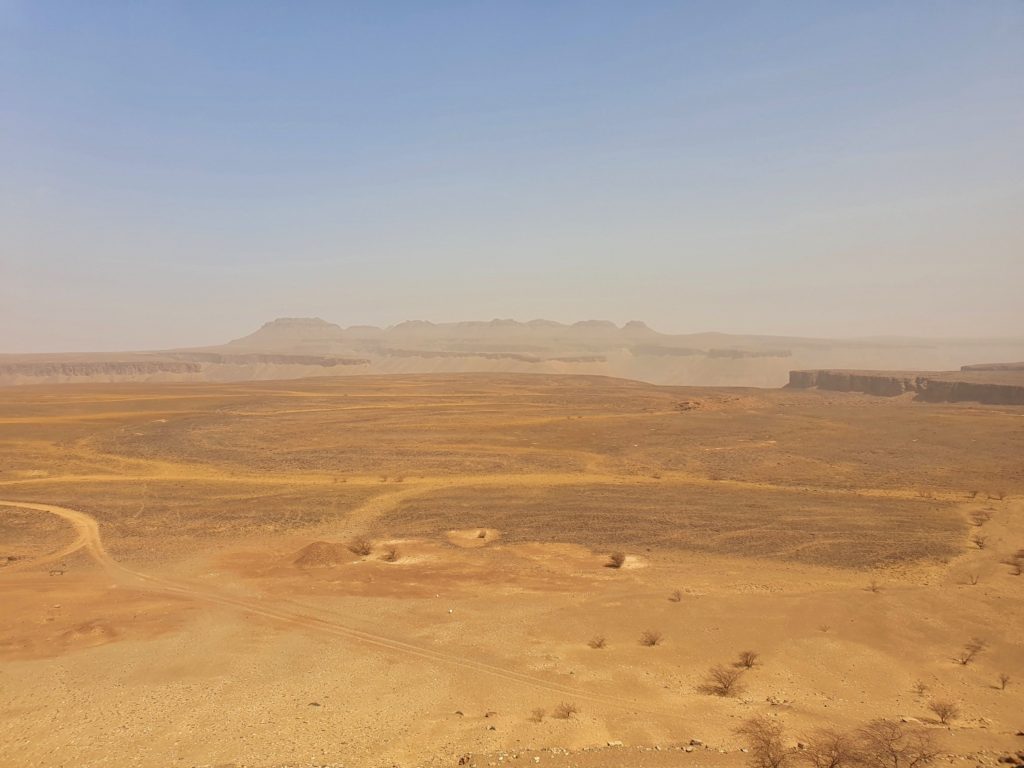
After spending five days with Time for Mauritania, I can definitely recommend them to everybody! We were not on the trip with Hademine himself but with his younger brother Mohammed and Nagi, the driver. Both were exceptionally good and made the greatest effort to ensure that we had the best possible trip. Besides, they had also a good sense of humor and we had a lot of fun during the trip.
Time for Mauritania offers an additional bonus that the other operators do not. I am talking about their cooperation with the train station manager in Choum. Thus, those who want to travel with the iron ore train can spend the waiting time for the train inside a house. Plus, you will have more time than all the others when choosing the train cars. This is because the train does not leave until the manager who is in telephone contact with Time for Mauritania gives his okay.
However, even if traveling with a guide makes Mauritania a bit easier, it is still not the easiest travel destination. And here is why:
First, do not expect the standard you will find in first world countries. Mauritania is a developing country and things do not always work out. That means that sometimes you will not get a shower with warm water or the electricity is not working. Accommodation is also very basic, especially outside of Nouakchott. And, oh boy, the internet was one of the slowest I have ever witnessed.
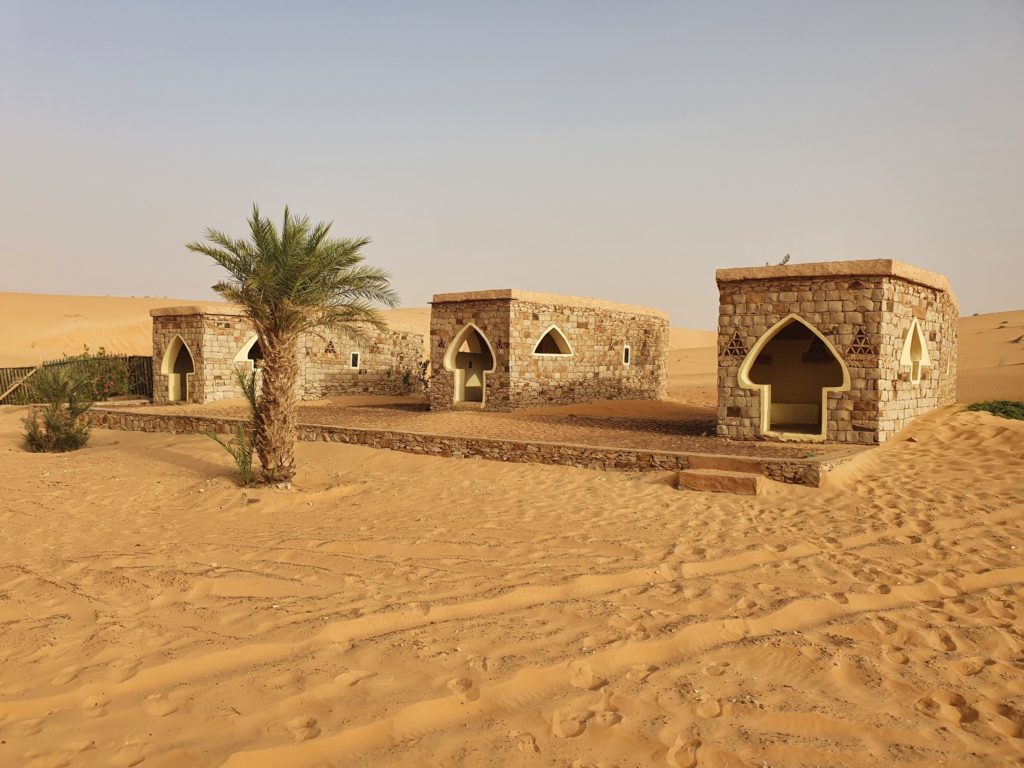
The food we had was alright, but did not offer too much variety. Mostly, we had couscous or rice with vegetables and meat. As the meat was often camel or coat, I lived the life of a vegetarian for a few days. Mauritania is a tea country and people will offering it all the time. The tea was tasty, although sometimes too sweet so that we had to put some water into it.
As I said, Mauritania is also a very conservative country. I would even call it one of the most conservative countries I have been to so far. It is not a secular state and their law is the Sharia. Muslim citizens who stop following the Islam are going to be punished by death (although Wikipedia says that this law has never been executed).
For travelers, this does not mean much, except that you should of course adapt to the rules and behave accordingly. Needless to say, you will not find alcohol in the country and you will often see men and women praying in public. To be more precise, you will see that every day and almost everywhere.
There is also a debate if Mauritania is dangerous or not. The Swiss Federal Department of Foreign Affairs (EDA) says on its website that there is a risk of being kidnapped and terror attacks cannot be ruled out either. It is true, there have been some kidnapping cases in Mauritania. But they were ten years ago and nothing happened since so that these travel warnings are exaggerated in my opinion.
You will pass numerous police checkpoints when traveling in Mauritania. This was set up a few years ago to improve the security situation and apparently it worked out.
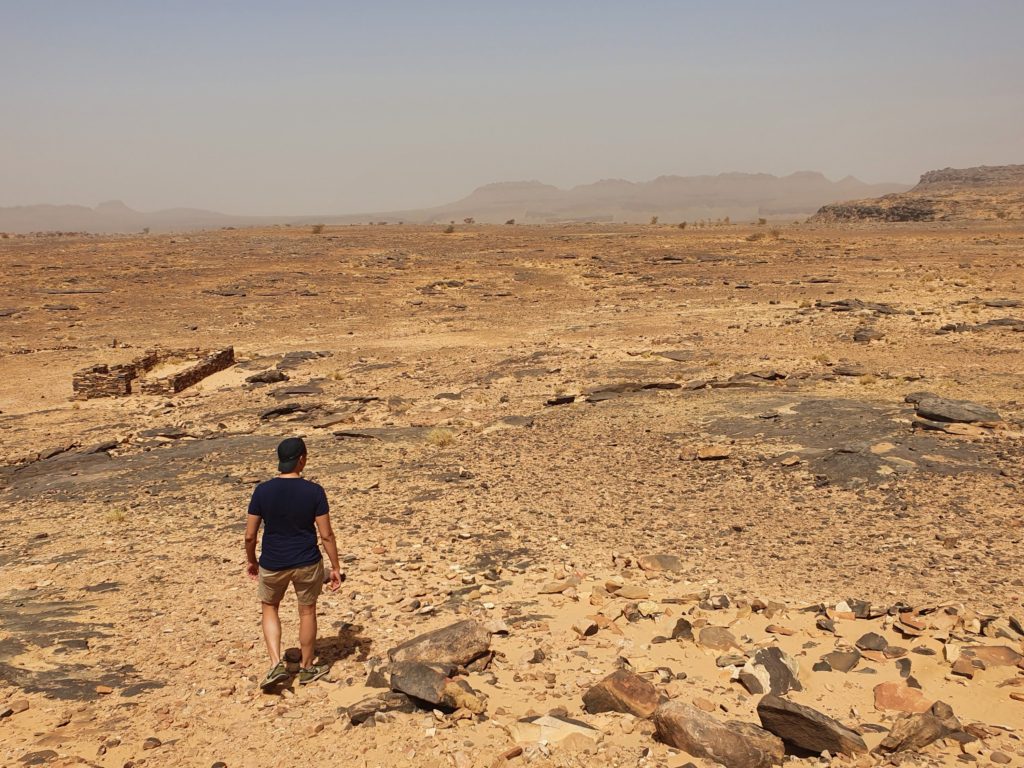
In conclusion, I absolutely enjoyed the trip to Mauritania, although I did not have the best start in the country. I was asked for some bribes at the airport right upon arrival, realized that my hotel, which I booked via booking.com, did not exist anymore, and then could not enter the next hotel I booked because they did not accept Swiss people anymore due to COVID-19. Just after long discussions they finally gave me the room I had booked.
Apart from that, I loved the trip. I still think about the vastness of the Sahara every day, plus the great train ride that I will never forget. There were still some sights we did not have time for, for example Ben Amera, the third largest monolith in the world, but all in all I found five days in Mauritania just right.
Final words for all those who are interested in a trip there: spend most of the time in the desert, keep the time in the cities short and ride the train. It is an epic adventure.
